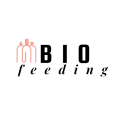Understanding the Basics of Bottle-Feeding
The responsibility of nurturing your baby comes with numerous challenges and rewards alike. One significant hurdle many new parents face is the task of bottle-feeding. A bottle-feeding guide can be a handy tool in navigating this essential journey; however, with the right approach and mindset, it can be a bonding experience filled with love and joy.
Overcoming the Initial Hurdles
Adapting to a bottle-feeding routine might be slightly challenging, especially for breastfeeding mothers transitioning to the bottle. These initial issues might range from getting the baby to accept the bottle to managing the quantity of milk to feed. It would help if you remembered that this is a common experience and patience is a virtue. Our resources on overcoming breastfeeding challenges could serve as a useful point of reference.
Creating a Stress-Free Bottle-Feeding Environment
Creating a comfortable and relaxed environment is crucial for a stress-free feeding experience. The emotions and feelings of the caregiver often affect the baby, and a relaxed state can help the baby to accept the bottle more readily. Holding your baby close, maintaining eye contact, and talking in a soothing voice can help create a calm atmosphere, similar to breastfeeding.
Necessary Supplies for Bottle-Feeding
Before you begin your bottle-feeding journey, it’s important to ensure you have the necessary equipment. The essentials include:
- Bottles: Choose a bottle with a design easy for the baby to hold and for you to clean.
- Nipples/Teats: It’s best to start with a slow flow nipple and gradually increase as the baby grows.
- Formula or Breast milk: You can choose to bottle feed with either formula or expressed breast milk based upon personal preference and circumstances.
- Bottle Brush: A good bottle brush is crucial for thorough cleaning.
- Sterilising equipment: To keep the bottles germ-free, you need an effective sterilisation method.
For more insight, you can check out the comprehensive Start4Life bottle-feeding guide.
Understanding Bottle-Feeding Techniques
Just as with breastfeeding, there are different techniques to effectively bottle-feed your baby. It’s best to experiment and find the technique that best suits you and your baby. Holding your baby upright and not flat on their back can prevent ear infections and make them feel more secure. Ensuring the bottle is tilted enough so that the nipple is always filled with milk can help avoid air ingestion.
Feeding on demand, as opposed to a strict schedule, can make the process smoother. Pay close attention to your baby’s cues to understand their hunger and fullness signals. Pausing every few minutes to burp your baby is also a good practice.
Preparing for Night Feedings
Night feedings can be particularly challenging for caregivers. However, with some planning and strategies, you can make these feedings much less stressful. Having a designated feeding area with all necessary supplies handy can make a big difference. Our guide on managing night feedings can provide more detailed strategies.
Proper bottle-feeding hygiene is vital to preventing illnesses. It’s imperative to clean all feeding equipment thoroughly after each use and sterilise them once a day. It involves washing in hot soapy water, rinsing thoroughly, and drying in a clean, dry place. Sterilise bottles, nipples/teats, and other equipment using a cold-water steriliser, sterilising machine or by boiling. A handy tip is to take apart all the bottle parts when washing and sterilising. The Better Health Channel guide on bottle-feeding hygiene provides detailed information on this topic.
Understanding the Role of Formula in Bottle-Feeding
If you opt for formula feeding, it’s necessary to comprehend the right way to prepare it. It’s crucial always to follow the manufacturer’s instructions on the packaging precisely as incorrect measures could harm your baby’s health. As a common guideline, you should prepare only one bottle at a time, at the correct concentration, and use them within two hours. For a better grasp, the NHS guide on bottle-feeding advice can be beneficial.
Finding the Right Bottle-Feeding Schedule
When it comes to feeding times, it’s best to adopt the “feed on demand” approach. It means feeding your baby when they show signs of hunger, such as rooting for the nipple or starting to fuss. Newborns typically require feeding every 2-3 hours, while older babies might go longer between feeds. It’s a good practice to keep track of feeding times and amounts, so you can recognise patterns and understand your baby’s need better. The Hopkins Medicine First Year Feeding Guide provides more in-depth understanding.
Dealing With Bottle Refusal
Bottle refusal can be frustrating, but it’s a common phase that most parents navigate through. Your baby might be more receptive to the bottle when slightly hungry rather than when extremely hungry. Experiment with different nipple flow rates, as some babies may prefer a slower or more rapid flow. Trying different temperatures for the milk may work too. Most importantly, remain patient and calm during feeding times, as your baby can sense your anxiety. Look for cues and gradually try to establish a pattern that is comfortable for both you and your baby.
Seeking Professional Guidance
If you face persistent problems or need more individualised advice, always seek help from a medical professional. They can address concerns, provide reassurance, and suggest strategies tailored to your situation. Also, remember that while feeding is essential, it’s the bond you create through this experience that contributes towards your baby’s emotional growth and well-being.

